BIOS¶
Main Page¶
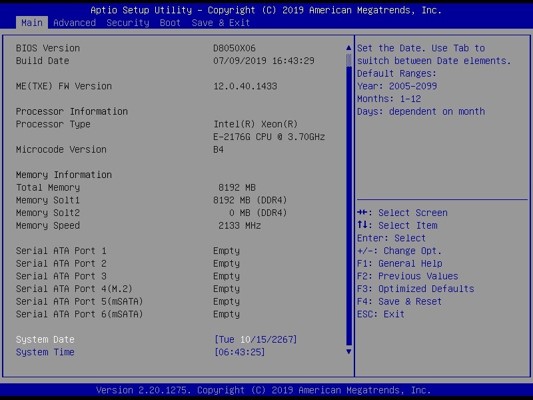
System Information¶
The Main Page displays essential system information, including BIOS version, build date, and hardware details. None of these fields are user-configurable.
BIOS Vendor: AMI Megatrends
BIOS Version: Displays the current BIOS version.
Build Date: Shows the BIOS build date.
ME (TXE) Firmware Version: Displays the Management Engine firmware version.
Processor Information: Provides details about the installed CPU.
Total Memory: Displays the installed RAM size.
Memory Frequency: Shows the memory clock speed.
SATA Devices: Lists installed storage devices connected via SATA, M.2, or mSATA.
System Date & Time Settings¶
The System Date & Time settings allow you to configure the system’s real-time clock.
System Date: Set using the format
[Www mm/dd/yyyy]where:Www: Day of the week (Mon-Sun)mm: Month (1-12)dd: Day (1-31)yyyy: Year (1998-9999)
System Time: Set using the format
[hh/mm/ss], where:hh: Hours (0-23)mm: Minutes (0-59)ss: Seconds (0-59)
Use the Tab key to switch between date and time fields.
Advanced Page¶
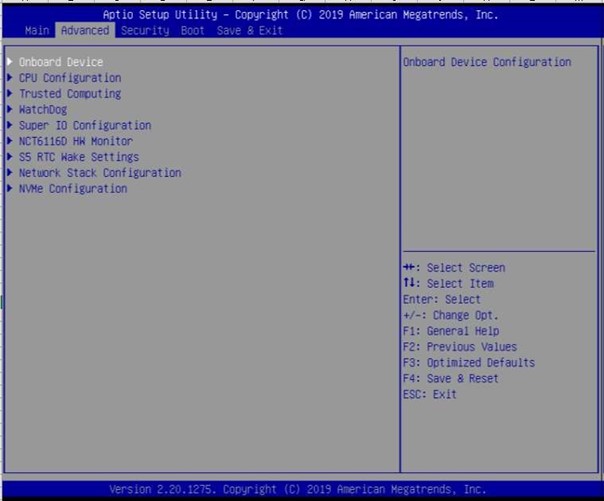
The Advanced Page contains various configuration options that allow users to fine-tune system behavior.
Advanced Configuration Options¶
Onboard Devices: Configure integrated device settings.
CPU Configuration: View and adjust processor settings.
Trusted Computing: Manage TPM and security features.
WatchDog: Enable or disable the WatchDog timer.
Super IO Configuration: Configure settings for system I/O controllers.
NCT6116D HW Monitor: Monitor system temperature, voltage, and fan speeds.
S5 RTC Wake Setting: Enable system wake-up from S5 using an RTC alarm.
Network Stack Configuration: Enable or disable UEFI network boot.
NVMe Configuration: Configure settings for NVMe storage devices.
Onboard Devices Configuration¶
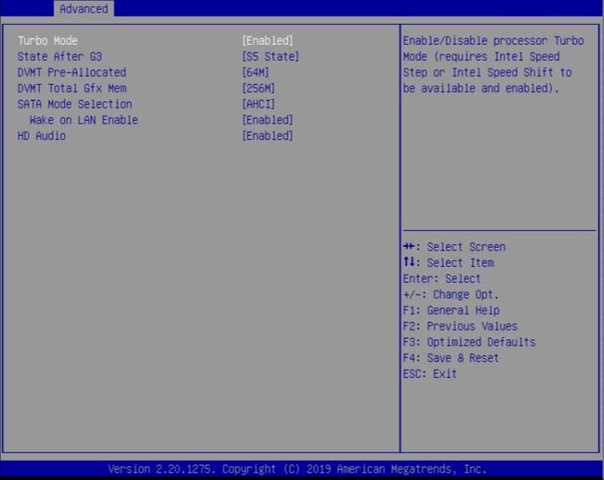
Turbo Mode: Enable or disable the processor’s Turbo Boost feature. Requires Intel Speed Step or Intel Speed Shift.
State After G3: Determines system behavior after power loss (options include S0 and S5 states).
DVMT Pre-Allocated: Set the amount of pre-allocated graphics memory for internal graphics.
DVMT Total Graphics Memory: Choose the total memory allocation for integrated graphics.
SATA Mode Selection: Defines how the SATA controller operates (AHCI or Intel RST Premium).
Wake on LAN: Enable or disable system wake-up on network activity.
HD Audio: Enable or disable high-definition audio detection.
CPU Configuration¶
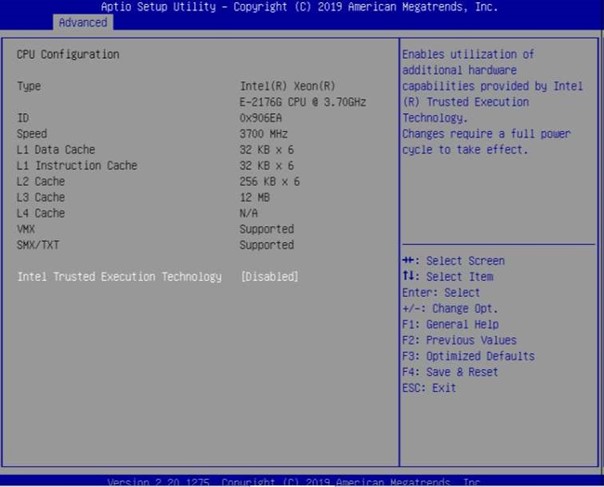
This section displays processor details and allows certain configurations:
Processor Type: Displays the installed CPU model.
Processor ID: Shows the CPU identification number.
Clock Speed: Indicates the processor’s base frequency.
Cache Levels: Displays information about L1, L2, and L3 caches.
VMX Support: Indicates whether Virtual Machine Extensions (VMX) are supported.
Intel Trusted Execution Technology: Allows enabling or disabling of Intel’s security extensions.
Trusted Computing¶
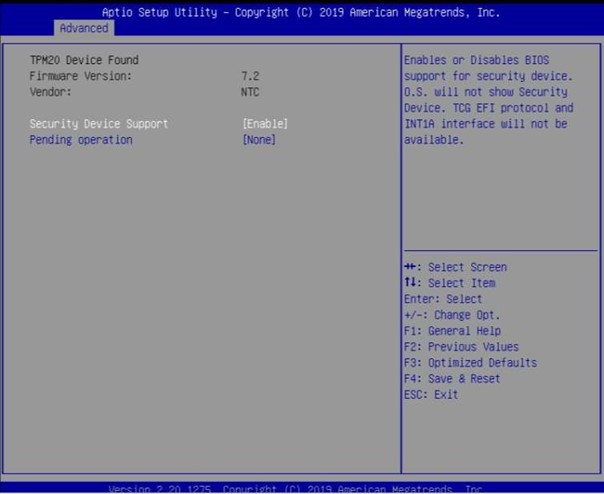
TPM 2.0 Device: Displays the presence of a TPM security module.
Firmware Version: Shows the TPM firmware version.
Vendor Information: Displays the TPM manufacturer.
Security Device Support: Enable or disable TPM functionality within the BIOS.
Security Page¶
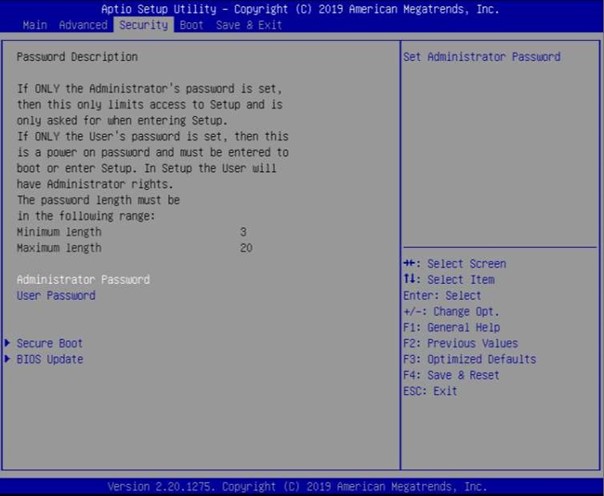
The Security Page allows configuration of password protection and security features:
Administrator Password: Set or modify the administrator password.
User Password: Set or modify the user password.
Secure Boot: Enable or disable Secure Boot to enforce signed OS loaders.
Secure Boot Configuration¶
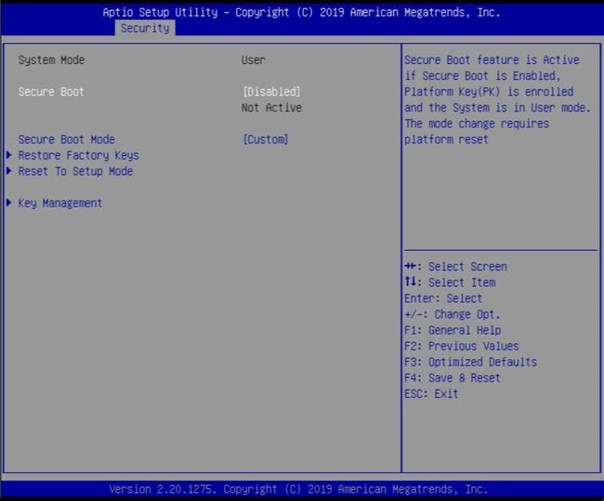
Secure Boot Mode: Choose between Standard and Custom configurations.
Restore Factory Keys: Reset Secure Boot keys to default factory settings.
Boot Page¶
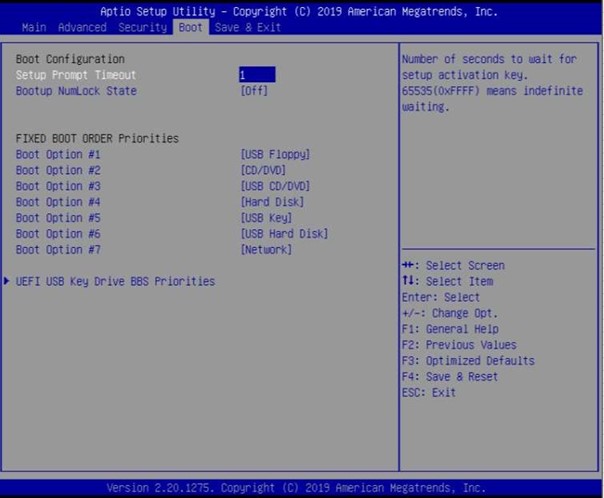
Setup Prompt Timeout: Set the time (in seconds) for the BIOS prompt to appear before boot.
Boot Order Configuration: Define the sequence of boot devices.
Save & Exit¶
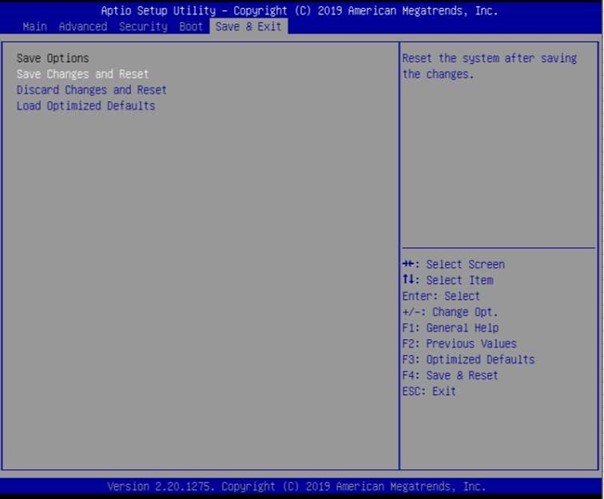
Save Changes and Reset: Apply changes and restart the system.
Discard Changes and Reset: Restart without saving any modifications.
Load Optimized Defaults: Restore factory default settings for all BIOS configurations.